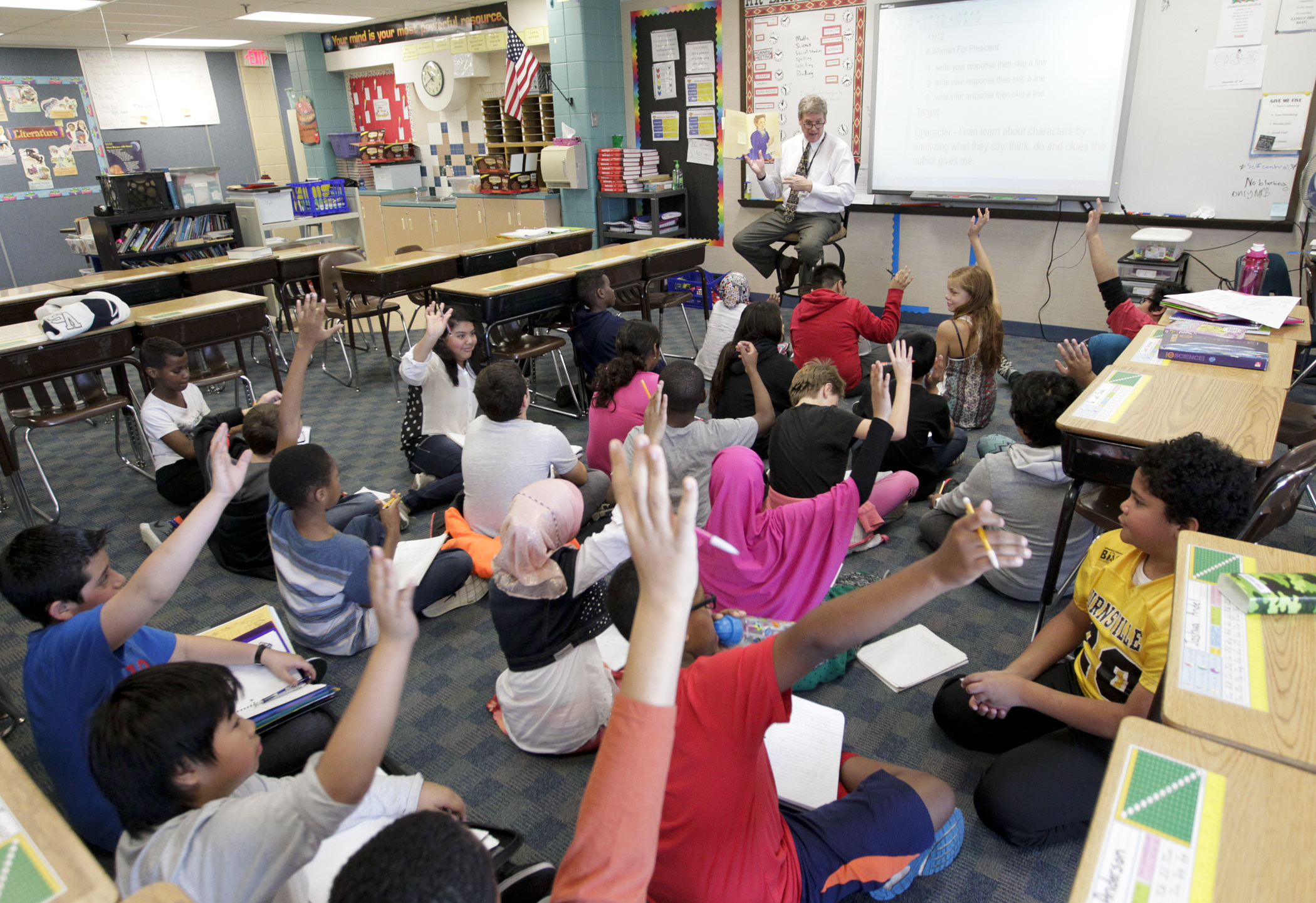House, Senate begin work on bridging $620.5 million divide on education bill

With less than two weeks left in the legislative session, the omnibus education finance bill conference committee has the difficult task of bridging vastly different perspectives on how best to fund and support students, staff and schools in the coming years.
Conferees began reviewing the differences between the House and Senate versions of HF1065*/SF960 Tuesday, with a side-by-side comparison of both proposals outlined by nonpartisan fiscal and research staff. They are scheduled to meet again Wednesday.
The House bill, sponsored by Rep. Jim Davnie (DFL-Mpls) would increase E-12 education spending over the next biennium by $772.6 million for a total of $21.2 billion, including nearly $400 million to increase the general education formula by 2% each fiscal year, an appropriation absent from the Senate’s version.
[MORE: View General Fund Aid summary, change items, property tax tracking]
Sen. Roger Chamberlain (R-Lino Lakes) sponsors the Senate bill, which includes $152.1 million in new spending, for a total E-12 biennial budget of $20.6 billion.
Notable investments included in the Senate proposal but absent from the House bill include $16.4 million for Safe Schools Aid, $12.6 million for Community Education Aid, and $11.5 million for Education Savings Accounts, which would provide money to families who choose to leave public schools for eligible private schools.
Other significant investments included in the House bill but absent from the Senate’s version include $70.1 million to reduce school districts’ special education cross-subsidies, $39.1 million to extend the 4,000 voluntary prekindergarten program seats that are set to expire, and $19.4 million to remove a cap on compensatory education revenue earned by schools with high concentrations of students from low-income families.
High transportation costs
Both bills include an increase in transportation sparsity aid for geographically large districts, but the percentage of that increase differs. The House would appropriate $1.6 million to increase the portion of a school district’s unfunded pupil transportation expenses from 18.2% to 30% of the unfunded amount. The Senate would increase it from 18.2% to 70% with a $15.3 million appropriation.
Teachers of color and Indigenous teachers
There is little agreement between the two bills when it comes to provisions pertaining to the teaching profession, licensure and hiring. However, both proposals include funding and measures geared toward increasing the percentage of teachers of color and Indigenous teachers in the state workforce. Identical new investments in both include funding for a recruitment campaign, Black Men Teach grants and Come Teach in Minnesota hiring bonuses.
However, overall investment in diversifying the state’s teacher pool differs by $13.3 million. The House would provide $23.3 million compared to the Senate’s $10 million proposal.
[MORE: View side-by side language, bill comparison summary]
Licensure changes and hiring practices
The House bill would make a variety of technical and substantive changes including limiting renewal of a Tier 2 license to two renewals, unless there is a good cause justification for additional renewal. It would also limit who is eligible to purse a pathway that allows a Tier 2 licensed educator to advance to a Tier 3 license through three years of coursework and evaluations.
Rather than modifying the pathways, the Senate bill would modify hiring and dismissal practices by striking the requirement that a school district must try to hire Tier 2, 3, or 4 licensed educators for the position before hiring a Tier 1 licensed teacher. It would also prohibit the use of seniority in determining the hiring and dismissal of teachers.
The Senate proposal also aims to address substitute teacher workforce shortages by expanding eligibility for Tier 1 licenses. It would allow a school district to employ a person who meets the professional requirements for a Tier 1 license without a baccalaureate degree as a short-call substitute in any content area, provided they pass a background check.
Other provisions in the House proposal but absent from the Senate version include:
- authorizing a school district to renew an existing operating referendum by action of the school board, as long as specified criteria are met;
- requiring districts’ World’s Best Workforce plans to include ethnic studies curriculum, and anti-racist and culturally sustaining curriculum; and
- prohibiting a public school from adopting a name, symbol, or image of an American Indian Tribe, custom, or tradition as a mascot, nickname, logo, letterhead, or team name of the district or school.
Other provisions in the Senate proposal but absent from the House version include:
- expanding the requirement that each district provide guidance and counseling services to nonpublic pupils, including elementary students enrolled in a nonpublic school within the school district;
- allowing a group or organization identified as a patriotic society to be included in school programs conducted on certain holidays or to have an opportunity to speak to students for a reasonable amount of time during the school day; and
- prohibiting a Minnesota State High School League member school from permitting a male student from participating in interscholastic or intramural athletic teams designed for female students.
Related Articles
Search Session Daily
Advanced Search OptionsPriority Dailies
Ways and Means Committee OKs proposed $512 million supplemental budget on party-line vote
By Mike Cook Meeting more needs or fiscal irresponsibility is one way to sum up the differences among the two parties on a supplemental spending package a year after a $72 billion state budg...
Meeting more needs or fiscal irresponsibility is one way to sum up the differences among the two parties on a supplemental spending package a year after a $72 billion state budg...
Minnesota’s projected budget surplus balloons to $3.7 billion, but fiscal pressure still looms
By Rob Hubbard Just as Minnesota has experienced a warmer winter than usual, so has the state’s budget outlook warmed over the past few months.
On Thursday, Minnesota Management and Budget...
Just as Minnesota has experienced a warmer winter than usual, so has the state’s budget outlook warmed over the past few months.
On Thursday, Minnesota Management and Budget...